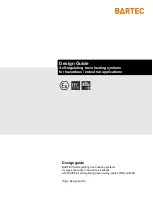
www.scheppach.com
service@scheppach.com
+(49)-08223-4002-99
+(49)-08223-4002-58
15 І 72
www.scheppach.com
service@scheppach.com
+(49)-08223-4002-99
+(49)-08223-4002-58
Electrode (Ø mm):
Welding current (A)
1.6
40 - 50 A
2
40 - 80 A
2.5
60 - 110 A
3.2
80 - 130 A
4.0
120 - 160 A
Important!
Do not dab the workpiece with the electrode since it
could be damaged, making it more diffi cult to ignite
the arc.
As soon as the arc has ignited, attempt to keep it a
distance from the workpiece equivalent to the diam-
eter of the electrode.
This distance should be kept as constant as pos-
sible during the welding process. The angle of the
electrode in the direction in which you are working
should be 20/30°.
Always use tongs to remove spent electrodes and to
move parts that you have just welded. Please note
that the electrode holder (9) must always be put
down so that it is insulated after you have completed
the welding work.
Do not remove the slag until the weld has cooled.
If you want to continue a weld after an interrup-
tion, the slag from your initial attempt must first be
removed.
Overheating guard
The welding set is fitted with an overheating guard
that protects the welding transformer from overheat-
ing. If the overheating guard trips, the control lamp
(5) on your set will be lit. Allow the welding set to
cool for a time.
Replacing the power cable
Danger!
If the power cable for this equipment is damaged, it
must be replaced by the manufacturer or its after-
sales service or similarly trained personnel to avoid
danger.
Maintenance and Care
Danger!
Always pull out the mains power plug before starting
any cleaning work.
Cleaning
•
Keep all safety devices, air vents and the motor
housing free of dirt and dust as far as possible.
Wipe the equipment with a clean cloth or blow it
with compressed air at low pressure.
•
We recommend that you clean the device im-
mediately each time you have finished using it.
•
Clean the equipment regularly with a moist cloth
and some soft soap. Do not use cleaning agents
or solvents; these could attack the plastic parts
of the equipment. Ensure that no water can
seep into the device. The ingress of water into
an electric tool increases the risk of an electric
shock.
Danger!
The mains plug may only be replaced by a
qualified electrician.
Connecting the welding cable (Fig. 5)
Danger! Always make sure the device is unplugged
before carrying out any connection work on the
welding cable (9/10)! Connect the welding cable as
shown in Fig. 5. To do so, connect the two connec-
tors on the electrode holder (9) and the ground ter-
minal (10) to the corresponding quick-lock couplings
(6/7) and lock the connectors in place by turning
them in a clockwise direction.
The cable with the electrode holder (9) is normally
connected to the positive pole (6) and the cable with
the ground terminal (10) to the negative pole (7).
Switching ON/OFF (Fig. 1)
Switch on the machine by moving the On/Off switch
(1) to the “I” position. The indicator lamp for opera-
tion (4) then comes on. Switch off the machine by
moving the On/Off switch (1) to the “0” position. The
indicator lamp for operation (4) then goes out.
Welding preparations
Connect the earth terminal (10) direct to the part
to be welded or to the support on which the part is
resting.
Ensure that the earth terminal is in direct contact
with the part to be welded. You should therefore
avoid coated surfaces and/or insulated materials.
The electrode holder cable has a special clamp at
one end, which is used to secure the electrode.
The welding safety shield must be used at all times
for welding. It protects your eyes from the radiation
emitted by the arc and nevertheless enables you to
watch the welding process.
Welding (Fig.1/5)
Connect all the electrical connections for the power
supply and for the welding current circuit. Most coat-
ed electrodes are connected to the positive pole.
However, some types of electrode have to be con-
nected to the negative pole. Ensure that you observe
the information supplied by the manufacturer in rela-
tion to the type of electrode and correct polarity. Fit
the welding cables (9/10) to the quick-lock couplings
(6/7) accordingly. Then fasten the unsheathed end
of the electrode in the electrode holder (9) and con-
nect the ground terminal (10) to the part you wish to
weld. Ensure that a good electric contact is made.
Switch on the device and set the welding current,
depending on the electrode used, using the poten-
tiometer (2). Hold the safety shield in front of your
face and rub the tip of the electrode on the part you
wish to weld as if you were striking a match. This is
the best method of igniting an arc. Check that you
have the correct electrode and current strength on a
test part.
GB
















































